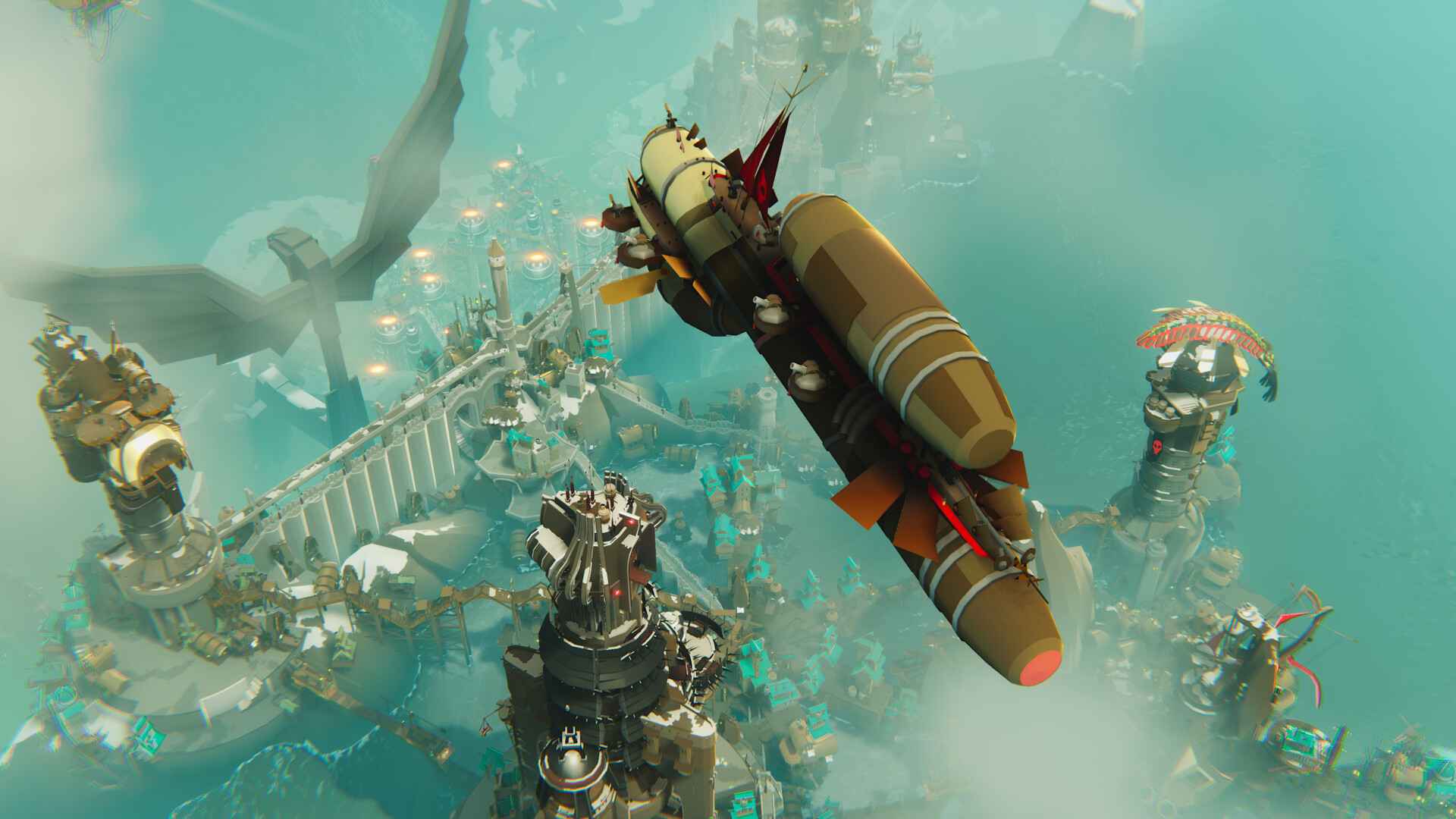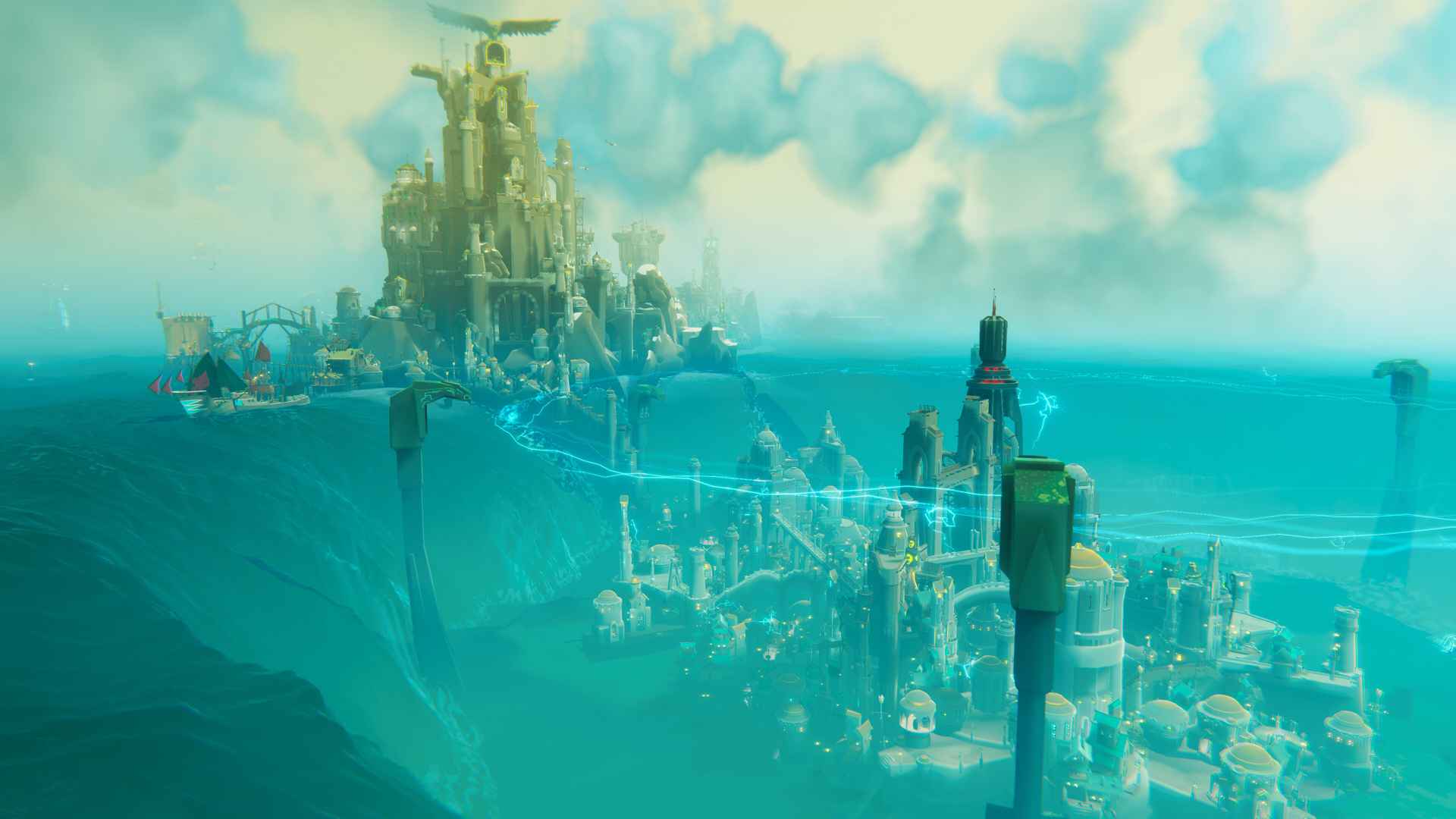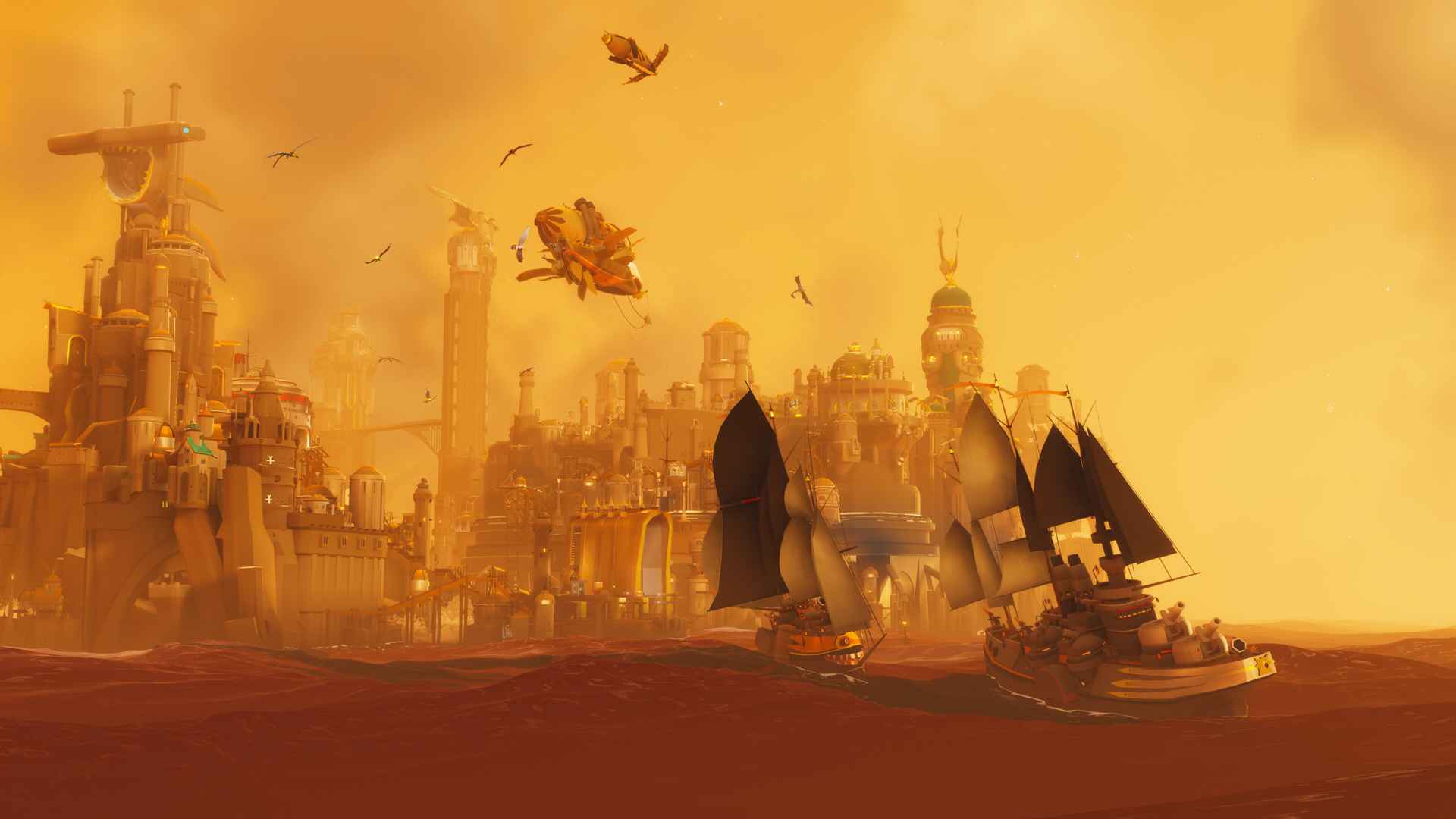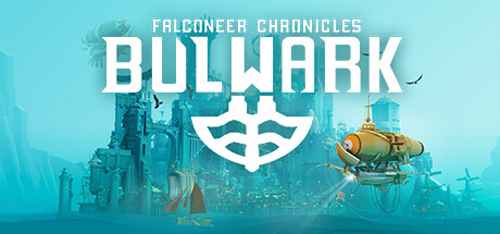Bulwark: Falconeer Chronicles Preview
Early on in a recent press event, game developer Tomas Sala said something that really caught my attention. Sala was speaking about 4X strategy games like Civilization. He said — and I’m paraphrasing here — that after players get through the first dozen rounds or so, the thrill of building something new turns into tedious micromanagement. That’s certainly my experience. With his new game, Bulwark: Falconeer Chronicles, Sala blends elements of 4X strategy with an open-ended, chill building game. The result is a unique, engaging, and rewarding experience that can be enjoyed in many ways.
Return to the World of Falconeer
Using a more detailed version of the art style and world of Falconeer, Sala’s new game is based on some familiar loops. Resource gathering, building, exploration, and trading or diplomacy are bedrock mechanics for strategy games, but in Bulwark, everything is intuitive, streamlined, and largely automated. You don’t need to recruit workers. They appear when you have resources and place structures. You don’t need to micromanage your citizens’ health, happiness, and religious affiliations. Most of the game consists of gathering, manufacturing, building, and expanding your influence through trade, optional conflict, or exploration.
Bulwark takes place 40 years after the events of Falconeer. Your task is to establish a series of magnificent and profitable settlements on the vast Great Ursee. The Great Ursee is an oceanic open world dotted by various sizes of rocky islands and archipelagos. The islands are sources of various minerals and other building materials. Of course, some of them have been occupied by both friendly and hostile factions. You must negotiate, trade, or, rarely, declare war. Sala said that, unlike most games in the 4X genre, Bulwark doesn’t have “victory conditions” to work towards. Sala pretty adamantly opposes the idea of “winning.” Instead, games in Bulwark spin out until the player explores all upgrades, resources, or commanders.

Dual Mode
Considering how big the map is and how creative Bulwark’s gameplay can be, expect a very long campaign. There’s also a Free Build mode. Unconstrained by economics or resource management, Free Build is just chill building all the way. Using a hovering airship, you effortlessly lay down walkways, housing, factories, and wharves. It feels a lot like Townscaper. The bulk of the fiddly or frustrating stuff is automatic, allowing you to focus on the pure fun of building your impressive, interconnected oceanic settlements. Also like Townscaper, you can repaint your buildings, so that each little enclave looks unique.
Overall, Bulwark: Falconeer Chronicles looks fantastic and painterly, though its color palette is often drenched in greens and blues. The game is detailed and up close has a very specific fantasy art style that draws a bit from steam or gear-punk design. While combat is not the focus of Bulwark, when it comes it looks impressive.

Anyone who has played Civilization or other complex strategy games with a controller knows frustration. Those games aren’t always a great fit for a controller. Bulwark, on the other hand, was built with controller input first, mouse and keyboard, second. It’s a refreshing, welcome change.

Take to the Sea
Listening to Tomas Sala talk about Bulwark: Falconeer Chronicles, I was impressed by his passion, confident choices, and, above all, respect for the player’s time and creativity. His game is at once trying to move players beyond a quick but stale set of mechanics, towards a strategy game that is always engaging, and unpredictable but fundamentally simple to play. On one hand, Bulwark is a streamlined builder that’s easy to enjoy. On the other, it’s a refreshing and fairly radical reimagining of some long-accepted mechanics. I’m looking forward to sailing the Great Ursee come March 26.
Thank you for keeping it locked on COGconnected.

